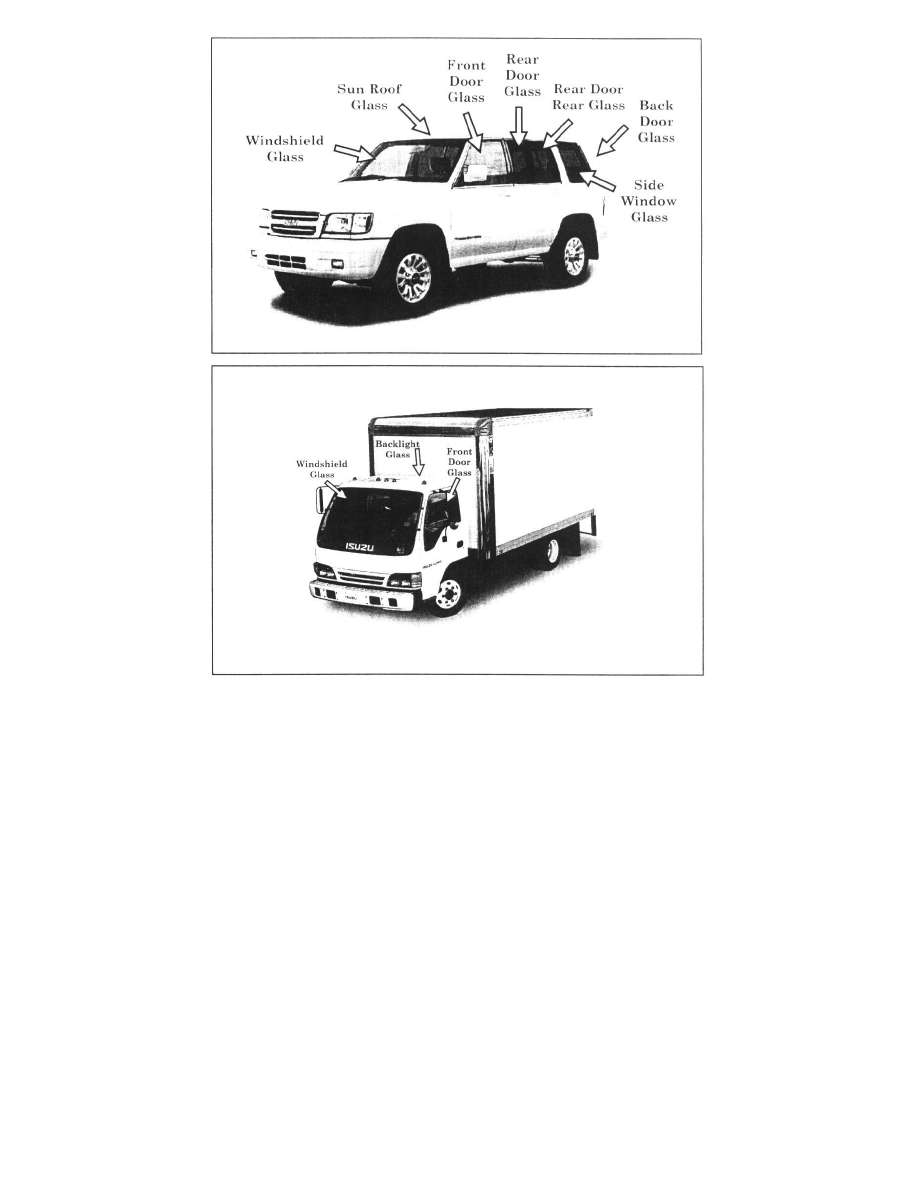Hombre S Regular Cab 4WD V6-4.3L (1999)

Identifying Vehicle Windows
Glass Properties
1.
The basic ingredients of glass are silica sand, soda ash, and limestone. More ingredients are added depending on the glass application. As basic a
glass may seem, glass also requires some maintenance to provide the longevity in its usefulness. Dirt, sand and airborne dust particles may contain
metals and substances that are harder than glass. Glass (i.e.. automobile windshield. etc.) can be damaged/scratched from dirt, sand and airborne
dust particles that may come in contact with it if not removed. Dirty wiper blades imbedded with dirt; sand and airborne dust particles can damage
the front windshield if used without first rinsing the windshield clear of them.
2.
Glass subject to external forces may be damaged from scratches. or break as a result of high impact on the glass.
Types and Characteristics of Automotive Safety Glass
There are two types of commonly used automotive safety glass. They are laminated glass and tempered glass.
(1)
Laminated Glass*
Laminated glass is a type of glass with a tough plastic film (Poly Vinyl Butyral a.k.a. PVB) is sandwiched between two sheets of glass bonded together in
a vacuum under controlled temperature and pressure forming a single sheet, to provide a high degree of safety. This is followed by extensive tests prior
to receiving clearance for usage. Laminated glass (used for automotive windshields) found in practically all automobiles produced, are part of current
safety regulations for production vehicles.
*Properties of Laminated Glass:
^
The interlayer cuts ultraviolet rays.
